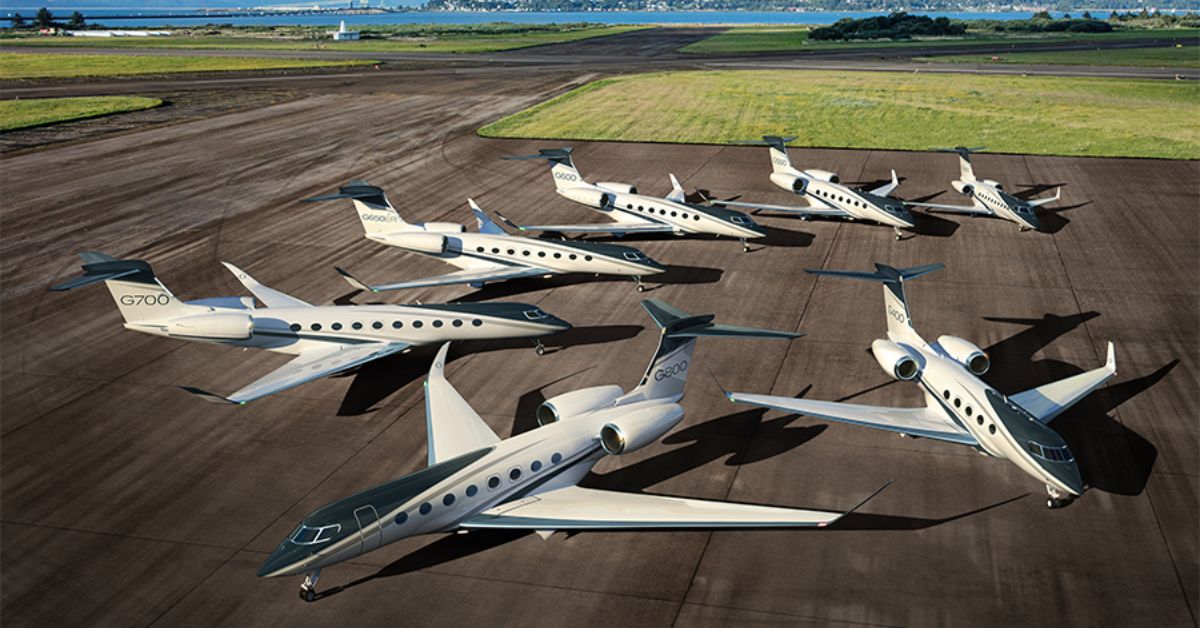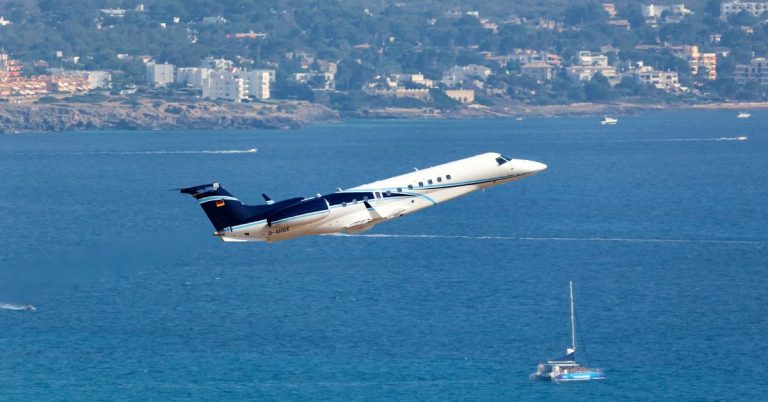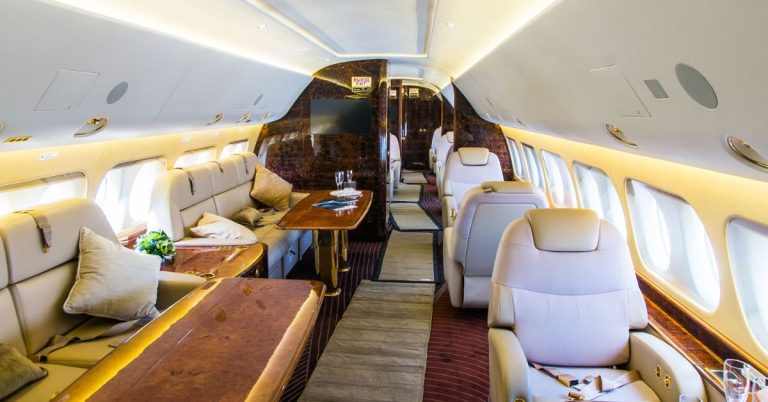When you think of private jets, what comes to mind? Maybe the image of luxury, exclusivity, and seamless travel that bypasses the usual airport hustle. Over the past decade, private aviation in India has experienced a remarkable transformation. More than just a symbol of status, private jets have become a practical and efficient mode of travel for business leaders, celebrities, and discerning travelers alike.
India’s rapidly expanding economy, booming corporate sector, and increasing demand for personalized travel experiences have all contributed to the growing popularity of private jets. Whether it’s a last-minute meeting in Delhi, a weekend getaway to Goa, or an international business trip from Mumbai, private jets offer unparalleled convenience and flexibility.
This article will take you on a detailed journey through the types of private jets available today. From nimble Very Light Jets perfect for short hops to ultra-luxurious long-range aircraft that connect India to the world, we’ll explore what makes each category unique. Along the way, I’ll share practical insights drawn from years in the business aviation industry and highlight how these aircraft fit into India’s unique travel landscape.
Whether you’re considering chartering a private jet for the first time, looking to understand what suits your needs best, or simply curious about the best private jets available, this guide will equip you with everything you need to know. Let’s take off!
The Main Types of Private Jets: Breaking It Down
Private jets come in many shapes and sizes, each designed to meet different travel needs, distances, and comfort levels. Understanding the main types of private jets helps you choose the right aircraft for your journey—whether it’s a quick business trip between Indian metros or a luxurious international flight.
Jets are typically classified based on their size, range (how far they can fly non-stop), speed, and cabin space. Let’s break down the five primary types you’ll encounter:
1. Very Light Jets (VLJs)
Think of VLJs as the nimble compact cars of the private jet world. They usually seat 4 to 7 passengers and are perfect for short trips — typically up to 1,200 kilometers (about 750 miles). Because of their smaller size, they can operate from smaller airports and require less runway length, making them ideal for quick hops within India.
Popular VLJs include the Cirrus Vision Jet and Embraer Phenom 100. As one of the most accessible types of private jets, these models are favored by startups, entrepreneurs, and small business teams who need swift, cost-effective travel between cities like Mumbai, Pune, and Ahmedabad.

While VLJs offer less cabin space, their affordability and flexibility make them an excellent entry point into private aviation in India. Plus, the convenience of avoiding busy terminals and fixed schedules is a huge time saver.
| Jet Model | Seating Capacity | Range (km) | Typical Use in India |
|---|---|---|---|
| Cirrus Vision Jet | 4 | ~1,200 | Short business trips; metro to tier-2 cities |
| Embraer Phenom 100 | 4 – 7 | ~1,200 | Quick hops; flexible, cost-effective travel |
2. Light Jets
Stepping up in size and range, light jets typically seat 6 to 8 passengers comfortably. Their cruising range extends up to around 3,000 kilometers (1,860 miles), allowing non-stop flights from Delhi to Chennai or Mumbai to Kolkata.
Jets like the Cessna Citation CJ series and Learjet 75 fit this category. As one of the most versatile types of private jets, light jets provide more space, better amenities, and higher speeds compared to VLJs, making them the preferred choice for small business groups and frequent flyers.

In the Indian context, light jets are popular for intra-country business trips and regional travel, especially where commercial flight options are limited or inconvenient.
| Jet Model | Seating Capacity | Range (km) | Typical Use in India |
|---|---|---|---|
| Cessna Citation CJ series | 6 – 7 | ~3,000 | Regional business travel between metro cities |
| Learjet 75 | 6 – 8 | ~3,000 | Fast, comfortable travel for small groups |
3. Midsize Jets
If you want more comfort and the ability to travel longer distances, midsize jets are your go-to. These aircraft typically seat 8 to 10 passengers and can fly up to about 4,000 kilometers (2,500 miles) non-stop. This range covers flights from major Indian cities to destinations like Dubai or Singapore, without refueling.
Models such as the Hawker 900XP and Bombardier Learjet 60 are well-known midsize jets. They offer spacious cabins, stand-up headroom, and enhanced amenities like entertainment systems and small galleys.
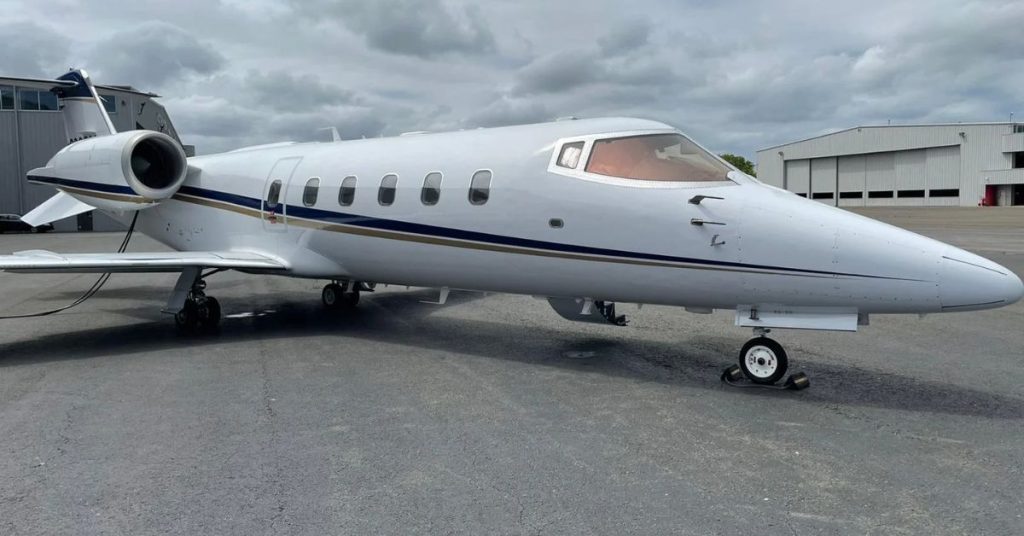
For Indian business executives who require seamless travel beyond domestic borders, midsize jets strike a fine balance between range, comfort, and operating cost.
| Jet Model | Seating Capacity | Range (km) | Typical Use in India |
|---|---|---|---|
| Hawker 900XP | 8 | ~4,000 | Domestic and short international flights |
| Bombardier Learjet 60 | 8 – 10 | ~4,000 | Spacious cabins for longer trips, business travel |
4. Super Midsize Jets
Super midsize jets take luxury and performance up a notch. As one of the premium types of private jets, these aircraft seat between 8 and 12 passengers and can fly around 5,500 kilometers (3,400 miles) non-stop—enough to connect cities like Mumbai with Europe or Southeast Asia directly.
Popular examples include the Gulfstream G280 and Citation X. These jets feature larger cabins, quieter cabins, and advanced avionics, offering an executive-level flying experience.

In India, these jets cater to high-net-worth individuals and corporations needing direct international connections without layovers. The combination of speed, range, and comfort makes super midsize jets increasingly sought after.
| Jet Model | Seating Capacity | Range (km) | Typical Use in India |
|---|---|---|---|
| Gulfstream G280 | 8 – 10 | ~5,500 | Longer domestic routes and direct international flights |
| Citation X | 8 – 12 | ~5,500 | High-speed, comfortable long-range travel |
5. Large Jets and Ultra-Long-Range Jets
At the pinnacle of private aviation are large and ultra-long-range jets. These flying palaces can carry 12 to 19 passengers comfortably across continents, with ranges exceeding 10,000 kilometers (6,200 miles). They’re designed for intercontinental flights — from India to the United States, Europe, or Australia — without refueling stops.
Some iconic aircraft in this category are the Gulfstream G650, Bombardier Global 7500, and Dassault Falcon 7X. Beyond their impressive range, these jets boast lavish interiors, spacious bedrooms, conference areas, and top-tier in-flight entertainment.

For India’s business magnates, film stars, and government officials, these luxury private jets are a symbol of ultimate freedom in travel — enabling them to reach any global destination with unmatched comfort and privacy.
| Jet Model | Seating Capacity | Range (km) | Typical Use in India |
|---|---|---|---|
| Gulfstream G650 | 12 – 18 | 12,000+ | Intercontinental business and luxury travel |
| Bombardier Global 7500 | 14 – 19 | 13,000+ | Long-range international travel for high-profile clients |
| Dassault Falcon 7X | 12 – 16 | 11,000+ | Ultra-long-range travel with superior luxury and tech |
Key Factors to Consider When Choosing a Private Jet
When exploring types of private jets in India, choosing the right aircraft is about more than just luxury—it’s about matching your unique travel needs with the correct type of private jet. Whether you’re chartering a jet for a quick business trip or considering ownership, here are the essential factors to keep in mind.
1. Trip Distance and Flight Range
The most important consideration when selecting from the many types of private jets is the flight range. Different private jets have different capabilities—some are designed for short hops, others for long-haul international flights. For example, a Very Light Jet may be perfect for domestic trips between Mumbai and Bangalore, but for longer routes to destinations like Dubai or Singapore, a midsize or super midsize private jet might be necessary.
In India, where airport infrastructure varies, opting for a private jet with sufficient range to avoid multiple stops can save time and stress, ensuring your journey is smooth and efficient.
2. Passenger Capacity and Cabin Comfort
The number of passengers directly influences which type of private jet fits your needs. Private jets in India range from smaller Very Light Jets seating four people to ultra-large jets accommodating over a dozen. For longer flights, cabin comfort becomes crucial—more spacious jets offer seating layouts with beds, workspaces, and entertainment options, allowing you and your guests to travel relaxed and productive.
Choosing the right private jet based on passenger count ensures everyone’s comfort without overpaying for unused space.
3. Budget: Chartering vs. Ownership
Cost is always a key factor when considering private jets in India. Chartering offers flexibility and no long-term commitment, making it ideal for occasional flyers or businesses just beginning to explore private aviation. Ownership or fractional ownership suits those who fly regularly and want more control over scheduling and customization.
Operating costs vary significantly depending on the jet type. Smaller jets like VLJs are more fuel-efficient and cheaper to operate, while ultra-long-range jets come with higher costs but offer unparalleled comfort and range.
4. Airport Accessibility in India
India’s diverse geography means that airport accessibility is a vital factor. Many smaller airports across the country can handle Very Light Jets and Light Jets, making these aircraft perfect for reaching remote business hubs or leisure destinations. Larger jets require major airports like Delhi IGI or Mumbai’s CSIA, which offer full services but might involve longer ground transfers.
Understanding airport capabilities and runway lengths helps you select a private jet that fits your typical routes within India.
5. Environmental Impact and Fuel Efficiency
Increasingly, travelers choosing private jets in India are considering fuel efficiency and environmental impact. Smaller jets tend to consume less fuel, reducing emissions and operational costs, an important factor as India aligns with global sustainability goals.
The aviation industry is also innovating with sustainable aviation fuels and hybrid models, which will soon influence the types of private jets available in the Indian market.
6. Speed and Onboard Amenities
Speed matters in private aviation—some private jets fly at remarkable speeds, cutting down travel time. However, there is a trade-off between speed, range, and comfort. Additionally, modern private jets come equipped with high-speed internet, advanced entertainment systems, and premium catering services, vital for business travelers in India who want to stay connected and comfortable during their flights.
Bringing It All Together
Choosing the right type of private jet is a personal and strategic decision, especially in India’s evolving aviation landscape. By balancing your typical travel distances, passenger needs, budget, and airport access, you can find a private jet that perfectly matches your lifestyle and business goals.
If you’re new to private aviation or want expert guidance, consulting a trusted charter service in India can help you navigate the options and select the ideal jet for your needs.
Real-World Insights and Experiences: Flying Private in India
Flying on a private jet in India is more than just a luxurious experience—it’s a practical solution tailored to the unique demands of the country’s vast geography, busy airports, and fast-paced business environment. Over my years working closely with clients and operators across India, I’ve witnessed firsthand how private jets transform travel for executives, celebrities, and even government officials.
The Indian Business Tycoon’s Secret to Efficiency
Consider a leading Mumbai-based entrepreneur who frequently needs to visit factories in Pune, clients in Delhi, and suppliers in Hyderabad—all within tight deadlines. Commercial flights often don’t align with such a packed schedule, especially with the unpredictable delays common in Indian aviation. Private jets enable him to customize departure times and fly directly to smaller airports closer to his destinations, saving hours otherwise lost in airport transfers and waiting lounges.

This flexibility is why many Indian businesses now embrace private jets not just as a luxury, but as a strategic tool for competitiveness.
Celebrities and the Need for Privacy
India’s film industry is famously fast-paced, with stars juggling shooting schedules, promotions, and personal commitments. For celebrities, privacy isn’t just a preference—it’s a necessity. Private jets provide a secure, discreet travel environment away from the paparazzi and crowds.
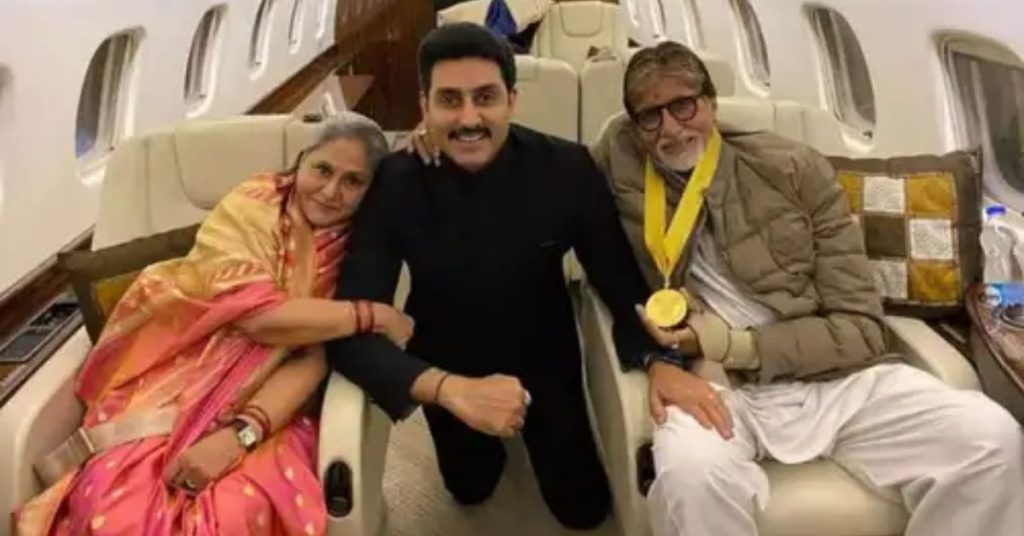
I’ve had clients share stories about how their private jet experience allowed them to arrive refreshed and ready, far removed from the hustle of commercial airports—a game-changer in maintaining their demanding lifestyles.
Overcoming Infrastructure Challenges
India’s airport infrastructure is improving, but regional airports often lack the facilities or runway length for larger jets. This is where smaller types of private jets, like Very Light Jets or Light Jets, come into their own. They can access airports in tier-2 cities such as Jaipur, Kochi, or Lucknow, connecting travelers to remote business hubs or tourist destinations. For urgent medical needs in remote regions, India’s best air ambulance services also leverage private jet access to ensure rapid and safe patient transport.
For example, I’ve seen how entrepreneurs in IT hubs like Bangalore and Hyderabad use these jets to reach emerging markets quickly and efficiently.
The Rise of Charter Services and Fractional Ownership
The cost and complexity of owning a private jet in India can be significant. Many companies and individuals turn to charter services that provide access to different types of private jets without the long-term commitment. Chartering has opened doors for a wider audience to experience private aviation in India.
Fractional ownership is another growing trend, where multiple owners share the costs and usage of a jet. This model is especially attractive for companies that need regular but not daily access to private jets, providing a balance between ownership and flexibility.
Personal Insight: Why I Believe Private Jets Are a Game Changer in India
Having spent years in business aviation, I’m convinced that private jets will continue to reshape how India travels. The country’s growing economy demands speed, flexibility, and comfort—qualities private jets deliver better than any other mode of air travel.
From bustling metros to remote towns, private jets bridge distances and time constraints. They allow you not just to travel but to do so on your terms, something invaluable in today’s fast-moving world.
The Future of Private Jets in India
The private jet industry in India is on the cusp of an exciting transformation. As the economy grows and the appetite for personalized, efficient travel increases, private jets are becoming an essential part of India’s aviation landscape.
1. Market Growth and Infrastructure Development
India’s private aviation sector is expanding rapidly, with increasing demand from business leaders, entrepreneurs, and luxury travelers. Major cities like Mumbai, Delhi, Bangalore, and Hyderabad are seeing growth in private jet operations, supported by better infrastructure such as dedicated private terminals and FBOs (Fixed Base Operators) that streamline private jet handling.
Government initiatives aimed at improving regional connectivity through schemes like UDAN (Ude Desh ka Aam Naagrik) indirectly support private aviation by boosting smaller airports. This expansion opens opportunities for different types of private jets to operate efficiently across the country.
2. Innovation: Sustainable and Tech-Driven Jets
Sustainability is gaining momentum globally and India is no exception. The future of private jets will likely include aircraft powered by sustainable aviation fuels (SAF), hybrid-electric engines, and advanced aerodynamics to reduce carbon footprints.
Indian operators and buyers are increasingly conscious of environmental impact, pushing manufacturers to innovate. Soon, new-generation private jets will offer quieter, greener, and more fuel-efficient travel options tailored for the Indian market.
3. Regulatory Environment and Safety
India’s Directorate General of Civil Aviation (DGCA) continues to strengthen regulations to ensure safety, security, and operational standards in private aviation. Improved oversight fosters confidence among users and operators alike.
As private jet ownership and charter services grow, expect more streamlined processes for flight permissions, ground handling, and customs clearances—making private jet travel even more seamless.
4. Demand for Regional and International Connectivity
The rise of startups, multinational corporations, and ultra-high-net-worth individuals in India fuels demand for both regional and global connectivity. Private jets bridge gaps where commercial airlines cannot offer direct or timely routes.
For example, super midsize and large jets increasingly connect Indian metros with financial hubs in Europe, the Middle East, and Southeast Asia. Simultaneously, smaller jets serve emerging markets and leisure destinations within India, making private aviation a versatile tool for business and lifestyle.
5. Looking Ahead: A Dynamic Aviation Landscape
In short, the future of private jets in India is bright and dynamic. With technological advancements, infrastructural support, and growing market demand, private aviation will become more accessible and efficient.
For travelers and businesses alike, understanding the evolving landscape and different types of private jets available is key to unlocking the full potential of this premium travel experience.
Conclusion
Navigating the world of private jets in India means understanding the diverse types of private jets available and how each suits different travel needs—from quick domestic hops to luxurious intercontinental journeys. Whether it’s a nimble Very Light Jet or a grand ultra-long-range aircraft, the right jet can transform your travel experience, making it faster, more comfortable, and tailored exactly to your schedule.
India’s growing economy and evolving infrastructure have made private jet travel not just a symbol of luxury but a smart, practical choice for business leaders, entrepreneurs, celebrities, and discerning travelers. As the market continues to expand, private aviation will play an even bigger role in connecting India internally and globally.
Choosing a private jet involves considering factors like range, passenger capacity, budget, and airport accessibility. Armed with this knowledge, you can confidently explore options that align with your unique needs and lifestyle.
If you’re ready to experience the freedom and efficiency that private jets offer, partnering with trusted operators and experts will ensure you find the perfect aircraft and make every journey seamless.
The sky is no longer the limit—it’s just the beginning.
Frequently Asked Questions (FAQ) About Private Jets in India
What is the cheapest type of private jet available in India?
The most affordable private jets in India are usually Very Light Jets (VLJs). They offer seating for 4 to 7 passengers and are perfect for short-distance travel. VLJs are cost-effective for businesses or individuals who need quick, flexible flights without the higher operating costs of larger jets.
How long does it take to charter a private jet in India?
Chartering a private jet in India can be arranged quickly—often within a few hours if the aircraft is available. For popular routes or special requirements, booking a few days in advance is recommended. Trusted charter companies help streamline this process, offering flexibility across various types of private jets.
Can private jets land at smaller airports in India?
Yes, many types of private jets, especially VLJs and Light Jets, can operate from smaller regional airports with shorter runways. This is a major advantage in India, allowing access to tier-2 cities and remote destinations that commercial airlines don’t serve directly.
How does one book a private jet in India?
Booking a private jet usually involves contacting a charter company or private aviation broker. They will assess your travel needs—including passenger count, destination, and schedule—and recommend the best type of private jet. Many companies also offer online booking platforms for added convenience.
Are private jets safe and regulated in India?
Absolutely. Private jets in India operate under strict regulations by the Directorate General of Civil Aviation (DGCA). Operators must comply with safety, maintenance, and pilot training standards, ensuring private jet travel is as safe as commercial aviation.
Have questions or experiences with private jets in India?
We’d love to hear from you! Drop a comment below and share your thoughts, travel stories, or any queries about choosing the perfect private jet. Let’s keep the conversation soaring!





